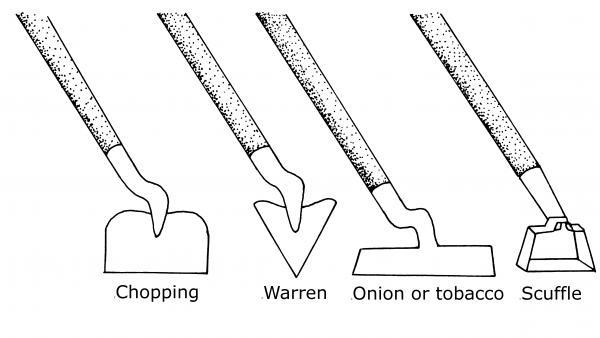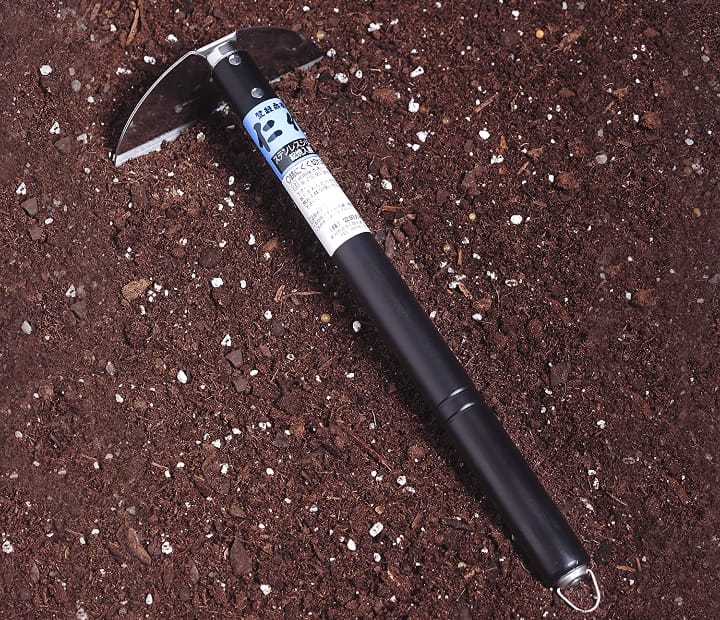Demystifying the Humble Hoe
The hoe is a fundamental gardening tool that has been a cornerstone of agricultural practices for centuries. Its importance in weeding, cultivating, and harvesting cannot be overstated. Despite its widespread use, many gardeners remain unclear about what a hoe looks like, its design evolution, and its various applications. The hoe’s design has undergone significant transformations over time, adapting to cater to different gardening needs and preferences. From its early beginnings as a simple, curved blade to its modern incarnations featuring ergonomic handles and specialized materials, the hoe has evolved to become an indispensable tool for gardeners of all levels.
What to Expect: A Visual Guide to Hoe Identification
So, what does a hoe look like? A typical hoe features a curved or angled blade, usually made of metal, attached to a handle. The blade’s shape and size vary depending on the type of hoe and its intended use. For instance, a draw hoe has a long, flat blade ideal for weeding and cultivating, while a stirrup hoe has a curved, scoop-like blade perfect for digging and harvesting. The handle, typically made of wood, metal, or fiberglass, can range from a simple straight handle to an ergonomic design with cushioned grips. Understanding these typical features is essential for identifying and selecting the right hoe for your gardening needs.
How to Choose the Right Hoe for Your Gardening Needs
Selecting the perfect hoe can be a daunting task, especially for novice gardeners. However, by considering a few key factors, you can find a hoe that perfectly suits your gardening needs. Soil type is a crucial consideration, as different hoes are designed to tackle specific soil conditions. For instance, a draw hoe is ideal for weeding and cultivating in loose, sandy soils, while a collinear hoe is better suited for dense, clay-based soils. Garden size is another important factor, as larger gardens may require a longer-handled hoe for increased reach and efficiency. Personal comfort is also essential, as a hoe that feels comfortable in your hands will reduce fatigue and improve overall performance. When choosing a hoe, consider the benefits of different types, such as the precision of a stirrup hoe or the versatility of a multi-purpose hoe. By taking these factors into account, you can find a hoe that will become an indispensable tool in your gardening arsenal.
Deciphering Hoe Variations: A Brief History and Evolution
The hoe’s rich history spans thousands of years, with early civilizations adapting the tool to suit their unique gardening needs. The ancient Egyptians, for instance, used hoes with curved blades to cultivate crops along the Nile River. In Asia, the hoe was a crucial tool in rice paddies, with farmers using long-handled hoes to navigate flooded fields. In Europe, the hoe evolved to accommodate different soil types, with the Romans developing a heavier, more robust hoe for tilling dense soils. As civilizations migrated and traded, the hoe’s design was influenced by various cultural and regional factors. Today, we see a diverse range of hoe variations, each tailored to specific gardening tasks and environments. Understanding the hoe’s evolution provides valuable insights into its versatility and adaptability, making it an indispensable tool in modern gardening.
Common Misconceptions About Hoes: Setting the Record Straight
Despite its importance in gardening, the hoe is often misunderstood and underappreciated. One common misconception is that hoes are simple, primitive tools with limited functionality. However, this couldn’t be further from the truth. Modern hoes are designed with precision and versatility in mind, offering a range of features and benefits that make them an essential tool for any gardener. Another myth is that hoes are only suitable for small gardens or novice gardeners. In reality, hoes are used by gardeners of all levels and are particularly useful in larger gardens where efficiency and precision are crucial. By understanding what a hoe looks like and its various features, gardeners can unlock its full potential and reap the rewards of this versatile tool. Expert gardeners and horticulturists agree that the hoe is a game-changer in gardening, offering unparalleled control and precision when it comes to weeding, cultivating, and harvesting. So, next time you’re in the garden, don’t underestimate the humble hoe – it may just become your new favorite tool.
The Art of Hoe Maintenance: Tips for Long-Term Performance
To ensure your hoe remains a trusted companion in the garden, regular maintenance is essential. A well-maintained hoe not only extends its lifespan but also enhances its performance, making gardening tasks more efficient and enjoyable. Start by cleaning your hoe after each use, removing any dirt, debris, or plant residue that may accumulate. A soft-bristled brush or cloth can be used to gently scrub the blade and handle. For more thorough cleaning, mix baking soda and water to create a paste, applying it to the blade and letting it sit for 30 minutes before rinsing. Regular sharpening is also crucial, as a dull hoe can lead to fatigue and decreased effectiveness. Use a whetstone or file to sharpen the blade, following the manufacturer’s instructions. Handle care is equally important, as a worn or damaged handle can compromise the hoe’s overall performance. Apply a wood conditioner or linseed oil to the handle periodically, ensuring it remains sturdy and comfortable to grip. By following these simple maintenance tips, you can keep your hoe in top condition, ready to tackle any gardening task that comes its way.
Hoe Safety 101: Preventing Injuries and Discomfort
While the hoe is an indispensable tool in gardening, it’s essential to use it safely to avoid injuries and discomfort. One of the most critical aspects of hoe safety is proper grip and stance. Hold the hoe with a firm, but not overly tight, grip, keeping your hands positioned at a comfortable distance apart. Stand with your feet shoulder-width apart, with one foot slightly in front of the other, to maintain balance and stability. When using the hoe, keep your back straight and your knees slightly bent, avoiding twisting or bending motions that can put strain on your back and joints. Additionally, be mindful of your surroundings, watching for obstacles like rocks, roots, or other hidden hazards that could cause tripping or slipping. It’s also crucial to wear appropriate clothing and footwear, such as gloves and sturdy shoes, to protect yourself from the elements and potential hazards. By following these simple safety guidelines, you can ensure a safe and enjoyable gardening experience with your trusty hoe.
Conclusion: Unleashing the Power of the Humble Hoe
In conclusion, the humble hoe is a multifaceted gardening tool that deserves recognition for its versatility and importance in gardening. From weeding and cultivating to harvesting, the hoe has evolved over time to cater to different gardening needs. By understanding its typical features, selecting the right hoe for specific gardening tasks, and maintaining it properly, gardeners can unlock the full potential of this often-underappreciated tool. Moreover, dispelling common misconceptions and emphasizing safe handling practices can further enhance the gardening experience. As we’ve explored the world of hoes, it’s clear that this simple yet effective tool has the power to transform gardening experiences. Whether you’re a seasoned gardener or just starting out, take the time to appreciate the humble hoe and discover its capabilities. With a deeper understanding of what a hoe looks like and how it can be used, you’ll be well on your way to unlocking the secrets of successful gardening.






